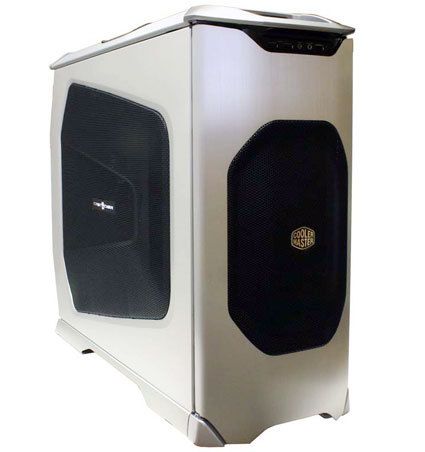Nvidia Goes For Four: Quad SLI Gaming Dissected
Testing Oblivion
By enabling "SLI" in the Driver, Quad is enabled.
Currently we have three systems with Quad SLI in our labs. The first two you know about: the Falcon Northwest Mach V, and the iBuyPower Quad SLI Extreme Gaming System. On Friday we received a Gamer Ultra SLI Quad system from CyberPowerPC as well. Due to the nature of this launch, we will go through each of these systems in a later review. We will have more in subsequent articles too, but we felt we should get as much out to you about Quad SLI today as we could. Note that all tests were performed using the Falcon Northwest Mach V.
CyberPowerPC Gamer Ultra SLI Quad
We have added a new set of tests based on the very popular game Elder Scrolls IV: Oblivion, which is very taxing on graphics cards. To adequately test Oblivion we felt using the built-in screensaver and Fraps would be the best way to capture what happens in-game. We have swapped notes with several other labs, including Intel's, and feel this is an adequate way to replicate results. Instead of using multiple settings and resolutions, we chose to turn virtually everything on including 4xAA and Bloom. Note that current Nvidia hardware cannot support AA and HDR, so we chose the lowest common denominator between ATI and Nvidia.
In our tests we chose two locations in the game. One is outside a city near the edge of the forest Northwest of Chorrol, and the second is inside a tower, for an indoor experience (Within an Oblivion Gate). Each save game is loaded, and then we wait until the camera view starts to pan around the character counterclockwise. We initiate Fraps to record the FPS each second for up to two full passes. We take the first 90 seconds of data and then compute the maximum, minimum and average results.
Below are the settings we used for Oblivion:
| Oblivion Settings | |
|---|---|
| Resolution | 1024x768, 1280x1024, 1600x1200, 2048x1536, 2560x1600 |
| Brightness | Default (We left this where the game originally starts it) |
| Texture Size | Large |
| Tree Fade | Max (All the way to the right) |
| Actor Fade | Max |
| Item Fade | Max |
| Object Fade | Max |
| Grass Distance | Max |
| View Distance | Max |
| Distant Land | On |
| Distant Buildings | On |
| Distant Trees | On |
| Int. Shadows | Max |
| Ext. Shadows | Max |
| Self Shadows | Off |
| Shadows on Grass | On |
| Tree Canopy Shadows | On |
| Shadow Filtering | High |
| Secular Distance | Max |
| HDR Lighting | Off |
| Bloom Lighting | On |
| Water Detail | High |
| Water Reflections | On |
| Water Ripples | On |
| Window Reflections | On |
| Blood Decals | High |
| Anti-aliasing | 4x |
We disabled Self Shadowing as this does not appear to work correctly. Basically, it makes everyone look like they have beards... even the ladies. (*shivers*) As mentioned before, Nvidia hardware cannot render HDR and AA together. ATI has a patch that makes this work but Nvidia does not, so to be fair we reverted to the lowest common denominator between the two.
Get Tom's Hardware's best news and in-depth reviews, straight to your inbox.

